
Desk Carbon Coaters
The process of carbon coating by thermal evaporation is a popular technique to coat a sample with a thin layer of carbon. Carbon coating applications vary from sample preparation for electron microscopy and structural analysis to research on the carbon-based coatings. Vac Coat offers carbon coaters and hybrid sputter and carbon coaters suitable for electron microscopy sample preparation and research purposes.
Carbon Coating Process
Carbon coating through thermal evaporation process is based on whether the carbon source is a thread/fiber or rod, each requiring a separate carbon coating workflow. Thermal evaporation carbon coater operation is commonly carried out in Flash and Pulse modes.
Carbon Coating Modes
In the Flash mode a continuous high electrical current is passed through the carbon rod or fiber to evaporate and coat the sample, while in the Pulse mode, a declined current in pulses of low duration (1-2 seconds) is used to do the deposition. The resulting carbon layer thickness and uniformity depends on the carbon coating method used. The flash mode represents a short-term deposition, but using the pulse mode provides more control over the coating process.
Carbon Coating Systems Applications
Carbon coating for SEM sample preparation and EDX analysis is one of the most important usages of a carbon coating system. Thus, performing repeatable, reliable depositions is required to properly evaluate the results, which is made possible by Vac Coat full automatic carbon coating systems. The auto carbon coaters allow the user to repeat the same carbon coating process running the saved coating programs.
Vac Coat Carbon Coaters
Vac Coat desk carbon coaters, DCR and DCT, are among the best carbon coaters, as noted by our customers. The low-vacuum DCR model is the economical version used for SEM sample preparation, whereas DCT is a high-vacuum turbo carbon coater, offering proper condition for more amorphous carbon layers, suitable for FESEM, EDX, and EBSD characterizations.
The large chamber turbo-pumped DCT-300 will benefit for uniform coating of numerous small samples or a large one up to 6 inch in diameter. In this model, the sample can be positioned in longer distances to the source in the chamber compared to DCT, so as to prevent heating the sample and spoiling the surface structure of heat-sensitive specimen that is to be studied with SEM.
Vac Coat also manufactures complete carbon coating systems as DSCR and DSCT, which contain sputter coating system in addition to the thermal evaporation carbon coater. Also DSCR-300, DSCR with a larger chamber (300mm Dia.), is offered for long-term duration depositions. The DSCT model can be accompanied by a metal thermal evaporator, named as DSCT-T. The DCT-T-300 model as a compound carbon and thermal evaporator with a large 300 mm Dia. chamber is also available for coating on larger samples.
These coaters can be supplied with diverse optional facilities like plasma cleaner (for plasma treatment of samples’ surface and TEM carbon grids), substrate heater, and various sample holder stages (rotating, planetary, different sizes).
FAQ
1- Why carbon coating is used instead of gold or platinum coating for observation of non-conductive samples via electron microscopes?
| Carbon films are used in both images from backscattered electrons and electrons scattered x-rays (EDX). Due to its low carbon atomic number, its peak does not overlap with other elements in X-ray analysis. |
2- Why we use carbon evaporation in our carbon coating systems instead of sputtering method?
| Due to the very low deposition rate in carbon sputtering, coated carbon film by thermal evaporation. |
3- What is the difference between carbon Fiber and Rod deposition process?
| Carbon fiber is easier to use and good for fine depositions. Carbon Rod is good for thicker film depositions; though, its preparation procedure is not as fast and simple as the fiber. Carbon fiber evaporation requires lower current, hence produces less heat during the deposition. |
4- Which one is more efficient?
| They are both good for SEM charcterization, carbon fibre evaporation produces less heat and simple to use, where carbon rod requires elevated current to be evaporated, resulting in more heat during evaporation. |
5- How do they know the time to change the carbon used of both Fiber and Rod?
| The fiber source holder can contain 3 fibres, and the system informs the user when it is needed to change to a new fibre. |
6- What happens to the coating process if the Carbon Fiber's tear or Carbon Rod's break?
| For the carbon fibre, the system works until all the selected carbon fibers are evaporated, then the system tells you to select a new fibre (system can be equipped up to 3 fibers). For the Rod, the carbon rod diameter is 3.2 mm, it has to be sharpened to a point, the heat and evaporation is at the area the two sharpened points meet. The rods are fixed on a flexible mounting to ensure that they are touching. When the rod points are evaporated, the user needs to sharpen them, and they should be checked before each evaporation run. |
7- How do the user monitor the coating process?
| The system has a screen to show the process parameters like pressure, deposition power and thickness being coated. |
8- How often the carbon rod or fiber source holders should be cleaned?
| The holders should be cleaned after each 2-3 evaporation processes with a soft brush to prevent deposition of contaminations and large debrises on the sampls. |
9- Can heat-sensitive samples be coated with carbon?
| It depends on the level of their sensitiviy against heating, however, the damage to the sample can be reduced by increasing the source-to-substrate distance and lowering the deposition time. |
10- What are the advantages of carbon coating compared to gold coating?
| There can be various reasons to use carbon coating instead of gold coating for SEM/EDX sample preparation. One of the gold coating disadvantages is that gold EDX peaks may undesirably interfere with the ones of the sample. For more information, please refer to our blog post, “selection of suitable material for SEM sample preparation.“ |

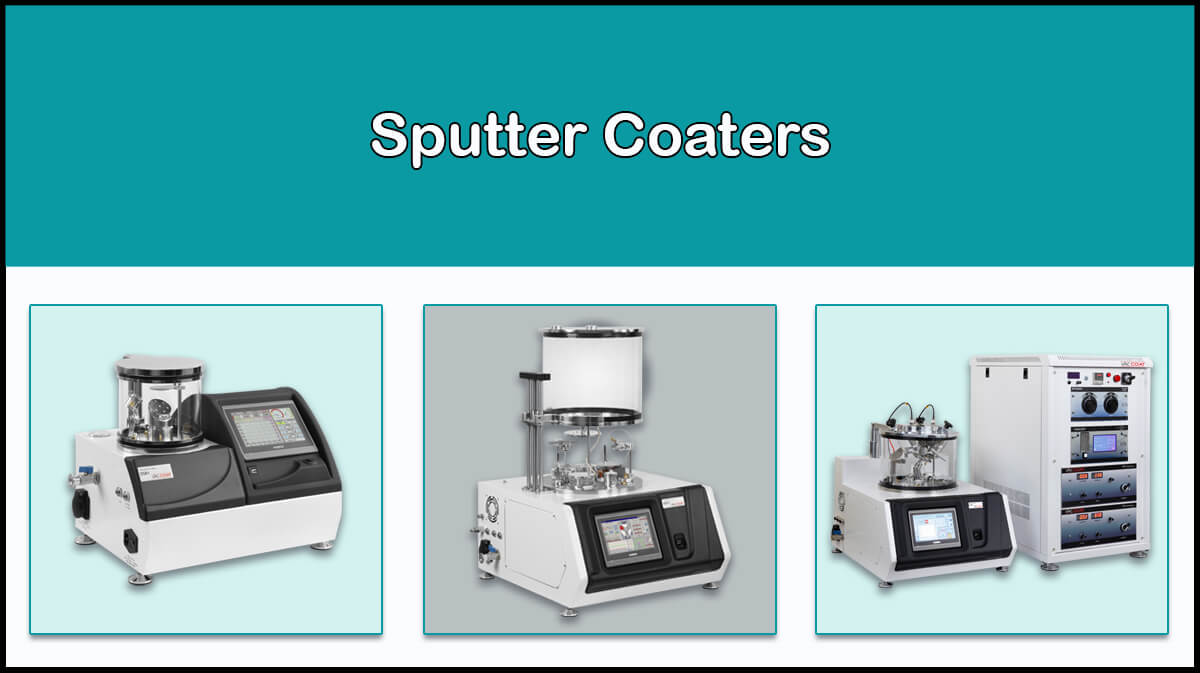

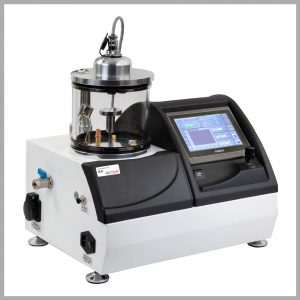


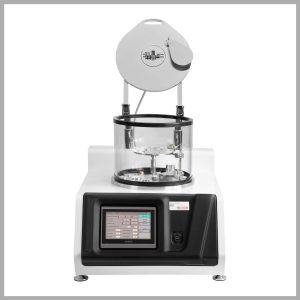
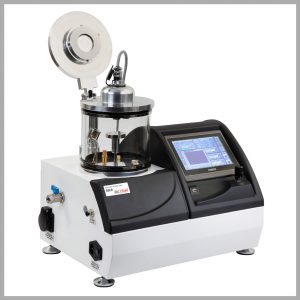
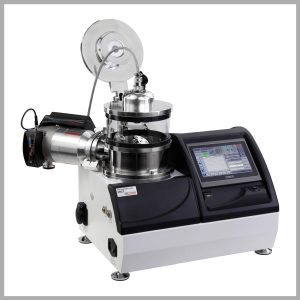

What is the amount of carbon rod/fiber usage of the carbon coating systems for deposition of less than 5 nm thickness film (as for SEM sample preparation)?
The carbon rod coatings with the 2 pieces of 5 cm rod carbon, with which the user could deposit at least 10 runs. In case of using 10 cm of the carbon fiber, the system can run for 2-4 times.
How to know the suitable time of coating?
Since the film thickness can be monitored in real-time, the usser can stop the coating process when reached the desired thickness.
What is the difference between high-vacuum and low-vacuum carbon deposition?
Higher vacuum level during carbon deposition leads to foramtion of less debris and a more amourphous carbon layer with enhanced conductivity on the substrate as reviewed in our blog article ” Effect of Chamber Ultimate Pressure on Carbon Coating“, which is beneficial in high-resolution characterizations like FE-SEM and EDX.
Do Vac Coat carbon coaters able to make carbon replicas for SEM analysis?
By making a plastic replica of the sample, it can be carbon coated by Vac Coat low or high-vacuum coaters. Then the plastic should be dissolved in a suitable solvent, leaving a carbon replica of the surface of the original specimen. The as-made carbon replica can be mounted on the micrsocope sample holder and examined.
What is diffrence between the two models DCR and DCT?
DCR and DCT systems manufactured by Vac Coat company can evaporate both carbon fiber and carbon rod. In the DCR model, only a rotary pump is used, but in the DCT model, a turbomolecular pump is also used to reach lower pressures.
What is the effect of vacuum pressure during the carbon evaporation on the quality of deposited carbon layer?
If the pressure in the vacuum chamber is more than 10^-3 mbar, the structure of the film will be crystalline and these crystals can be observed at a magnification of more than 25,000 times. If the vacuum pressure of the vacuum chamber is less than 10^-5 mbar, the film will be amorphous and its conductivity will be 10 times more, but for this purpose, more powerful vacuum pumps such as turbomolecular pumps are needed.